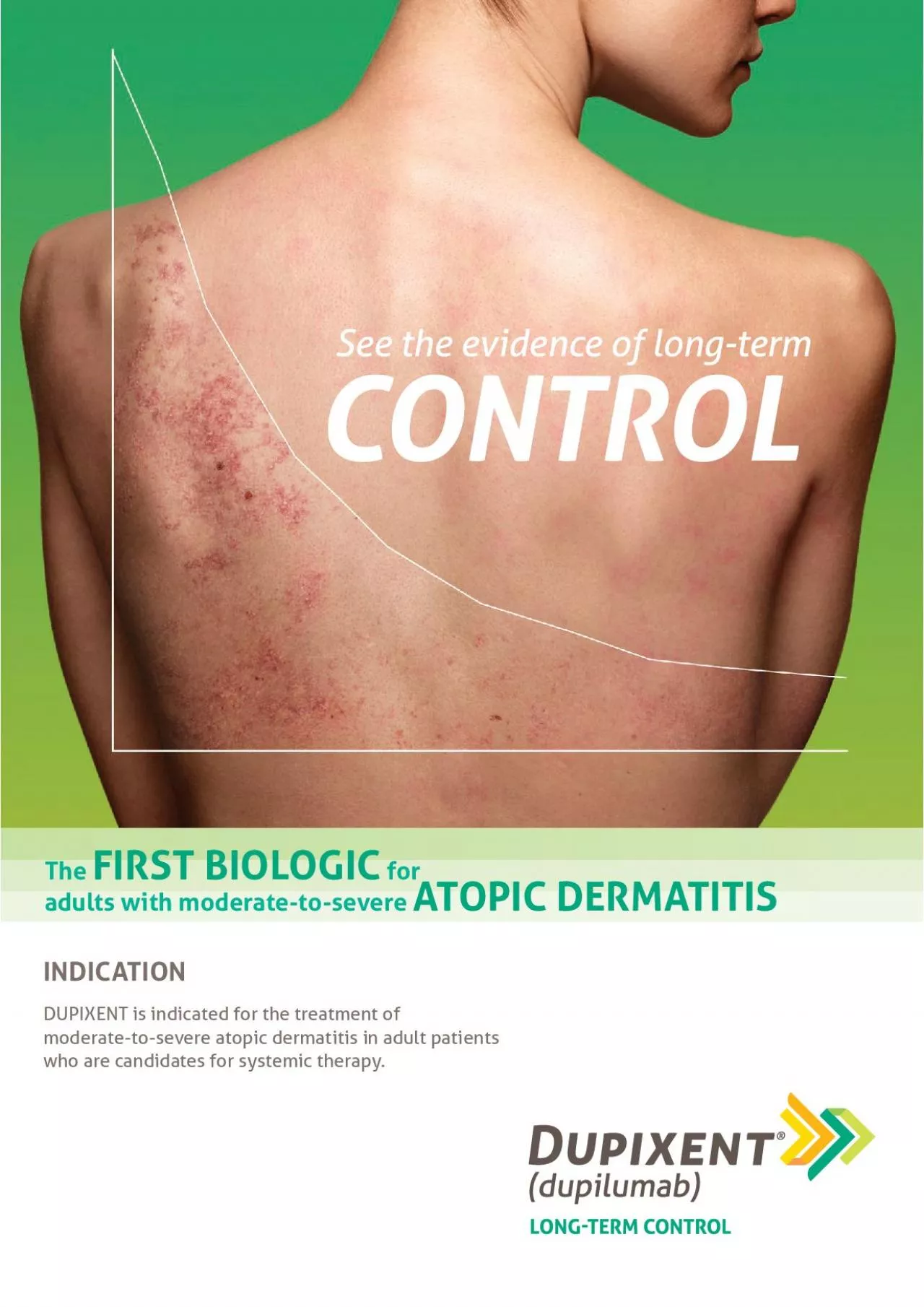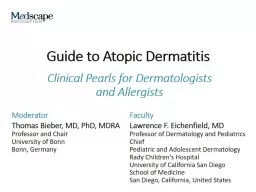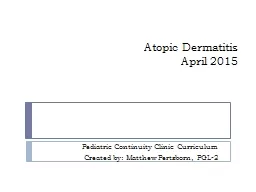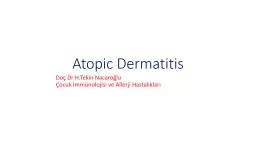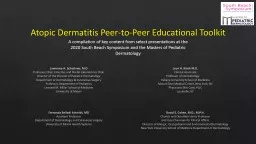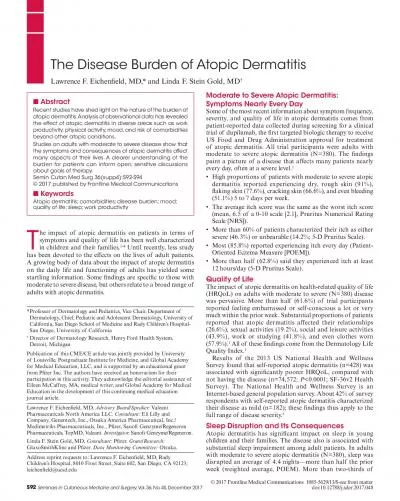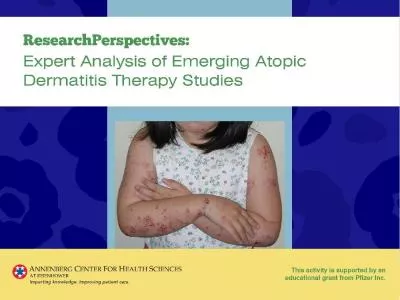PDF-Dupixent is indicated for the treatment of moderatetosevere atopic d
Author : bella | Published Date : 2021-08-15
First targeted biologic for adults with moderatetosevere atopic dermatitisRapid and sustained improvement in Lesion extent and severity Qualityoflife measuresDiscontinuation
Presentation Embed Code
Download Presentation
Download Presentation The PPT/PDF document "Dupixent is indicated for the treatment ..." is the property of its rightful owner. Permission is granted to download and print the materials on this website for personal, non-commercial use only, and to display it on your personal computer provided you do not modify the materials and that you retain all copyright notices contained in the materials. By downloading content from our website, you accept the terms of this agreement.
Dupixent is indicated for the treatment of moderatetosevere atopic d: Transcript
Download Rules Of Document
"Dupixent is indicated for the treatment of moderatetosevere atopic d"The content belongs to its owner. You may download and print it for personal use, without modification, and keep all copyright notices. By downloading, you agree to these terms.
Related Documents

